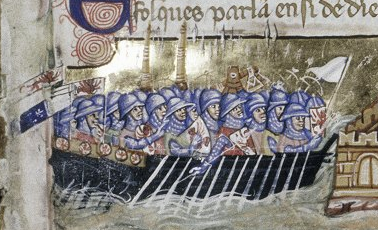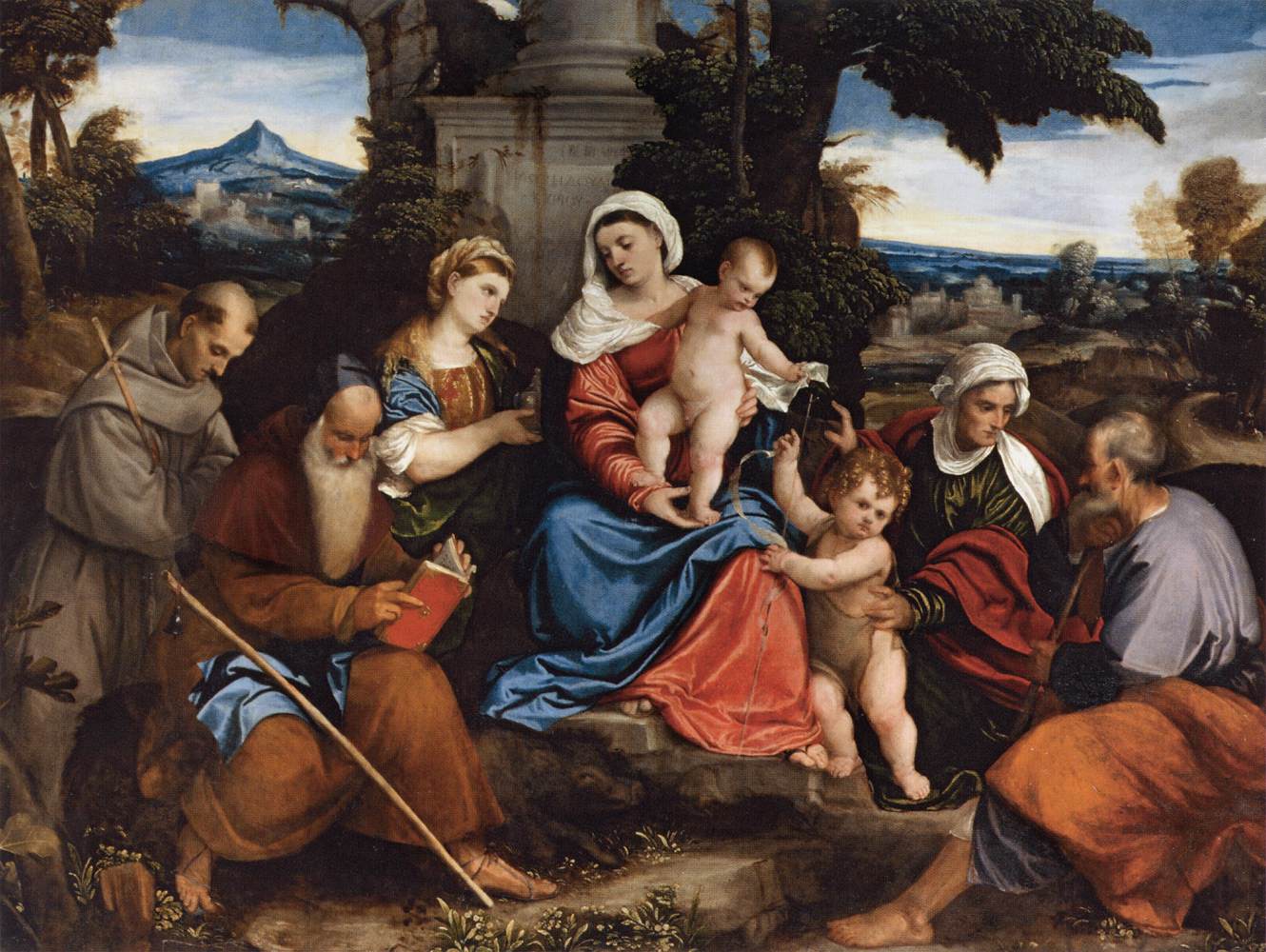|
Stefano Cernotto
Stefano Cernotto (fl. 1530–1542) was an Italian painter of Croatian origin. His name has numerous variations but, at birth, it was most likely Cernotis or Zernotis. Life and work Nothing was known of his life until some documents were discovered in 1902. He was probably born on Rab, a small island just off the Croatian coast which, at that time, was part of the Republic of Venice. By 1530, apparently already a painter, he was in Venice. where he is on record as paying taxes for his wife, Marina. In 1533, he designated his brother, a priest named Gerolamo, to be his executor and legal representative. In the 1548 register of tithes, Marina is described as a widow. from the '' |
Rab (island)
Rab [ɾâːb] is an island in the Primorje-Gorski Kotar County in Croatia, located just off the northern Croatian coast in the Adriatic Sea. The island is long, has an area of and 7,161 inhabitants (2021). The main settlement on the island is the eponymous town of Rab, although the neighboring village of Palit has the biggest population. The highest peak is Kamenjak at 408 m. The northeastern side of the island is mostly barren, karst, while the southwestern side is covered by one of the last oak forests of the Mediterranean. Ferries connect the island of Rab with the mainland port of Stinica and with the neighbouring islands of Krk and Pag (island), Pag. European Coastal Airlines offered multiple daily connections by seaplane from Rab to Zagreb Airport, Zagreb and to Rijeka via Rijeka Airport in Omišalj on the neighboring island of Krk, until it ceased operations in 2016. Name The island of Rab was first mentioned in a Greek language, Greek source Periplus of Pseudo-Scylax ... [...More Info...] [...Related Items...] OR: [Wikipedia] [Google] [Baidu] |
Republic Of Venice
The Republic of Venice, officially the Most Serene Republic of Venice and traditionally known as La Serenissima, was a sovereign state and Maritime republics, maritime republic with its capital in Venice. Founded, according to tradition, in 697 by Paolo Lucio Anafesto, over the course of its History of the Republic of Venice, 1,100 years of history it established itself as one of the major European commercial and naval powers. Initially extended in the ''Dogado'' area (a territory currently comparable to the Metropolitan City of Venice), during its history it annexed a large part of Northeast Italy, Istria, Dalmatia, the coasts of present-day Montenegro and Albania as well as numerous islands in the Adriatic Sea, Adriatic and eastern Ionian Sea, Ionian seas. At the height of its expansion, between the 13th and 16th centuries, it also governed Crete, Cyprus, the Peloponnese, a number of List of islands of Greece, Greek islands, as well as several cities and ports in the eastern Me ... [...More Info...] [...Related Items...] OR: [Wikipedia] [Google] [Baidu] |
Dizionario Biografico Degli Italiani
The ''Dizionario Biografico degli Italiani'' () is a biographical dictionary published in 100 volumes by the Istituto dell'Enciclopedia Italiana, started in 1960 and completed in 2020. It includes about 40,000 biographies of distinguished Italians. The entries are signed by their authors and provide a rich bibliography. History The work was conceived in 1925, to follow the model of similar works such as the German ''Allgemeine Deutsche Biographie'' (1912, 56 volumes) or the British ''Dictionary of National Biography'' (from 2004 the ''Oxford Dictionary of National Biography''; 60 volumes). It is planned to include biographical entries on Italians who deserve to be preserved in history and who lived at any time during the long period from the fall of the Western Roman Empire In modern historiography, the Western Roman Empire was the western provinces of the Roman Empire, collectively, during any period in which they were administered separately from the eastern provinces b ... [...More Info...] [...Related Items...] OR: [Wikipedia] [Google] [Baidu] |
Treccani
Institute Giovanni Treccani for the publication of the Italian Encyclopedia (), also known as Treccani Institute or simply Treccani, is a cultural institution of national interest, active in the publishing field, founded by Giovanni Treccani and Giovanni Gentile in 1925. It is known for publishing the first edition and the subsequent ten supplements of the ''Italian Encyclopaedia of Science, Literature and Arts'' (). History The Institute of the Italian Encyclopaedia was founded in Rome in 1925 by Giovanni Treccani, with the philosopher Giovanni Gentile as editor-in-chief. The first publication by the Institute was the ''Enciclopedia Italiana di Scienze, Lettere e Arti'' (). This encyclopaedia, best known as ''Enciclopedia Italiana'' or the ''Great Encyclopaedia'', is an Italian-language encyclopaedia and is regarded as one of the great encyclopaedias, being international in scope, alongside ''Encyclopædia Britannica'' and others. Since the 1990s, Treccani has been playing ... [...More Info...] [...Related Items...] OR: [Wikipedia] [Google] [Baidu] |
Bonifacio Veronese
Bonifazio Veronese, born Bonifazio de' Pitati (1487 – 19 October 1553), was a Venetian Renaissance painter who was active in the Venetian Republic. His work had an important influence on the younger generation of painters in Venice, particularly Andrea Schiavone and Jacopo Tintoretto.Thomas Nichols. "Pitati, Bonifazio de’." Grove Art Online. Oxford Art Online. Oxford University Press. Web. 28 Dec. 2016 Life The artist was born in Verona from which his family moved to Venice around 1505. Here, the young artist reputedly trained under Palma il Vecchio. He was initially a close follower of il Vecchio. He ran a large workshop in Venice, which could execute small devotional works as well as large painting projects. His early work also shows his knowledge of Giorgione and TitianPitat ... [...More Info...] [...Related Items...] OR: [Wikipedia] [Google] [Baidu] |
Palazzo Dei Camerlenghi
Palazzo dei Camerlenghi is a Renaissance palazzo in Venice, northern Italy, located in the ''sestiere'' (quarter) of San Polo. It faces the Canal Grande, adjacent to the Rialto Bridge. History file:Palazzo dei Camerlenghi (Venice).jpg, Viewed from the terrace of the Fondaco dei Tedeschi The palazzo was built in the fifteenth century and finished in 1488. From 1525 to 1528 it was enlarged according to a design by Guglielmo dei Grigi, who was inspired by the style of Mauro Codussi and Pietro Lombardo. It was the headquarters for several financial magistrates, including the , from whom it takes its name, the Consuls of the Traders and the Supra-Consuls of the Traders. Due to this function, the lower floor was used as a jail for those who defaulted on their debts: the location near the crowded Rialto Bridge served as an admonition for the people passing by. The palazzo currently houses the regional main offices of the Italian Comptroller and Auditor General. Description The three- ... [...More Info...] [...Related Items...] OR: [Wikipedia] [Google] [Baidu] |





